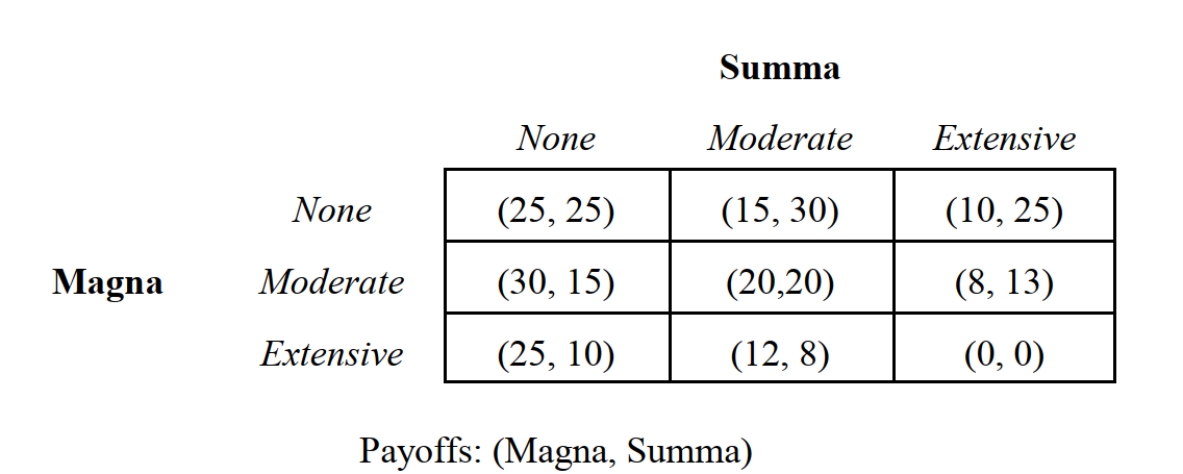Multiple Choice

-Suppose that the game depicted in Figure 11.5 is modeled as a multistage game with Magna Corporation moving first. The payoffs to both companies from a subgame perfect equilibrium are:
A) (25, 10) .
B) (30, 15) .
C) (10, 25) .
D) (20, 20) .
E) (25, 25) .
Correct Answer:

Verified
Correct Answer:
Verified
Q5: <img src="https://d2lvgg3v3hfg70.cloudfront.net/TBR1330/.jpg" alt=" -Consider the game
Q6: A player has a first-mover advantage:<br>A) If
Q7: <img src="https://d2lvgg3v3hfg70.cloudfront.net/TBR1330/.jpg" alt=" -Consider the one-time,
Q8: <img src="https://d2lvgg3v3hfg70.cloudfront.net/TBR1330/.jpg" alt=" -Consider the game
Q9: <img src="https://d2lvgg3v3hfg70.cloudfront.net/TBR1330/.jpg" alt=" -Refer to Figure
Q11: In multistage games, every decision node is:<br>A)
Q12: <img src="https://d2lvgg3v3hfg70.cloudfront.net/TBR1330/.jpg" alt=" -Suppose that the
Q13: <img src="https://d2lvgg3v3hfg70.cloudfront.net/TBR1330/.jpg" alt=" -Consider game depicted
Q14: <img src="https://d2lvgg3v3hfg70.cloudfront.net/TBR1330/.jpg" alt=" -Consider the game
Q15: A subgame-perfect equilibrium:<br>A) Is a Nash equilibrium